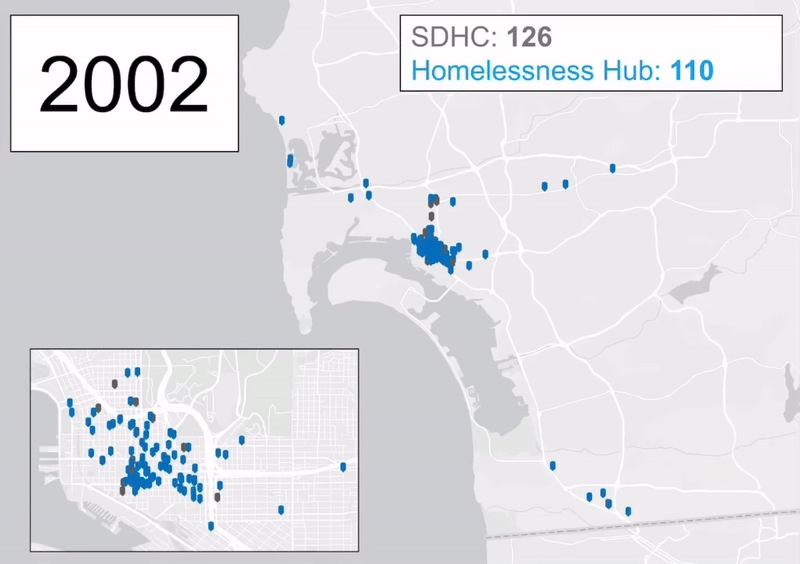Housing on the Margins: Single-Room Occupancy Hotels in San Diego
Introduction
Single-room occupancy hotels, or SROs, are often referred to as the “housing of last resort” and are typically the cheapest rental options in urban housing markets. SROs offer residents small rooms, often with limited, shared amenities, such as communal bathrooms and kitchens. As an affordable housing option with low barriers to entry, the City of San Diego has an interest in preserving and incentivizing the construction of additional SROs. This study was designed to measure change over time in the stock of San Diego SROs and to assess the benefits and drawbacks of relying on SROs to house tenants who are generally vulnerable to housing instability, including low income workers, senior citizens, and persons with disabilities. Contrary to the popular belief that SRO tenants are vagrants, moving from one city to the next, many live in their units for years, as SROs offer an alternative to living unhoused or are the cheapest option for people who cannot secure a housing voucher or affordable housing unit.
In San Diego, as is true in other cities across the country, there is a direct connection between the loss of SRO units and rising rates of homelessness1. Many SROs in San Diego were destroyed in the 1970s and 1980s to make way for the construction of Horton Plaza and the Gaslamp District. SRO units continue to decline within the city, despite the passing of a SRO preservation ordinance in 1985.
1 Kennedy School of Government Case Program. 1995. Housing’s Bottom Rung: Single-Room Occupancy Hotels in San Diego.
Project Summary
We used SRO building lists maintained by the San Diego Housing Commission (SDHC) to show the decline in SROs from 2002 and 2023, viewable in the image below. The motivation behind SDHC and city government attempts to preserve SROs is that they are the most affordable housing option downtown. When SROs close, large displacement events occur, evicting dozens of people who are likely to be at least temporarily homeless. An accurate count of which buildings are operating as a low-cost, low-barrier option is critical to understand how much housing has been lost and what needs to be replaced at a low price point.
To more accurately represent the supply of SROs over time, we created a separate count of SROs that matched a stricter criteria than that applied by SDHC, which largely depends on building owners to register their buildings as SROs or relies on previous SRO designations. By our definition, an SRO building has rooms that can be rented by day, week, or month, but are not being rented out on websites like AirBnB; where units rent for no more than $1,370 per month (or 30 percent of the income of a person earning 60 percent of the area median income); where the entire renting population is not under any kind of facility-wide treatment program (e.g., no sober living, or permanent supportive housing); and is larger than a single-family home. We verified that buildings matched this criteria through online searches, phone calls to properties, and physical visits, when necessary. Our count of SROs is smaller than SDHC’s count in every year, as detailed in the below map.

Animated map showing decrease in SRO hotels in San Diego over the past two decades
We formally interviewed 60 residents and seven property managers living and working across a sample of 11 SROs located in downtown San Diego. We sampled tenants and managers in buildings of varying size, age, quality, and number of amenities. We additionally spoke with five SRO owners. We interviewed residents, managers, and property owners to get their unique insights into what is beneficial about living, managing, or owning SROs and what would improve their respective situations.
Our interviews with residents focused on topics including building conditions, SRO location, relationships with managers and fellow residents, and affordability of units. Interviews allowed us to understand how resident's daily lives are shaped by their home, its location in the city, and its built environment. We document tenants’ first-hand accounts of their movement between homelessness to housing, and what factors put individuals at risk of falling back into homelessness. We center resident interviews to give SRO residents the platform to tell their stories in their own voice.
Project Team
Jennifer Nations
Stacey Livingstone
Magda Gomez
Helen Tran
Michael Yang